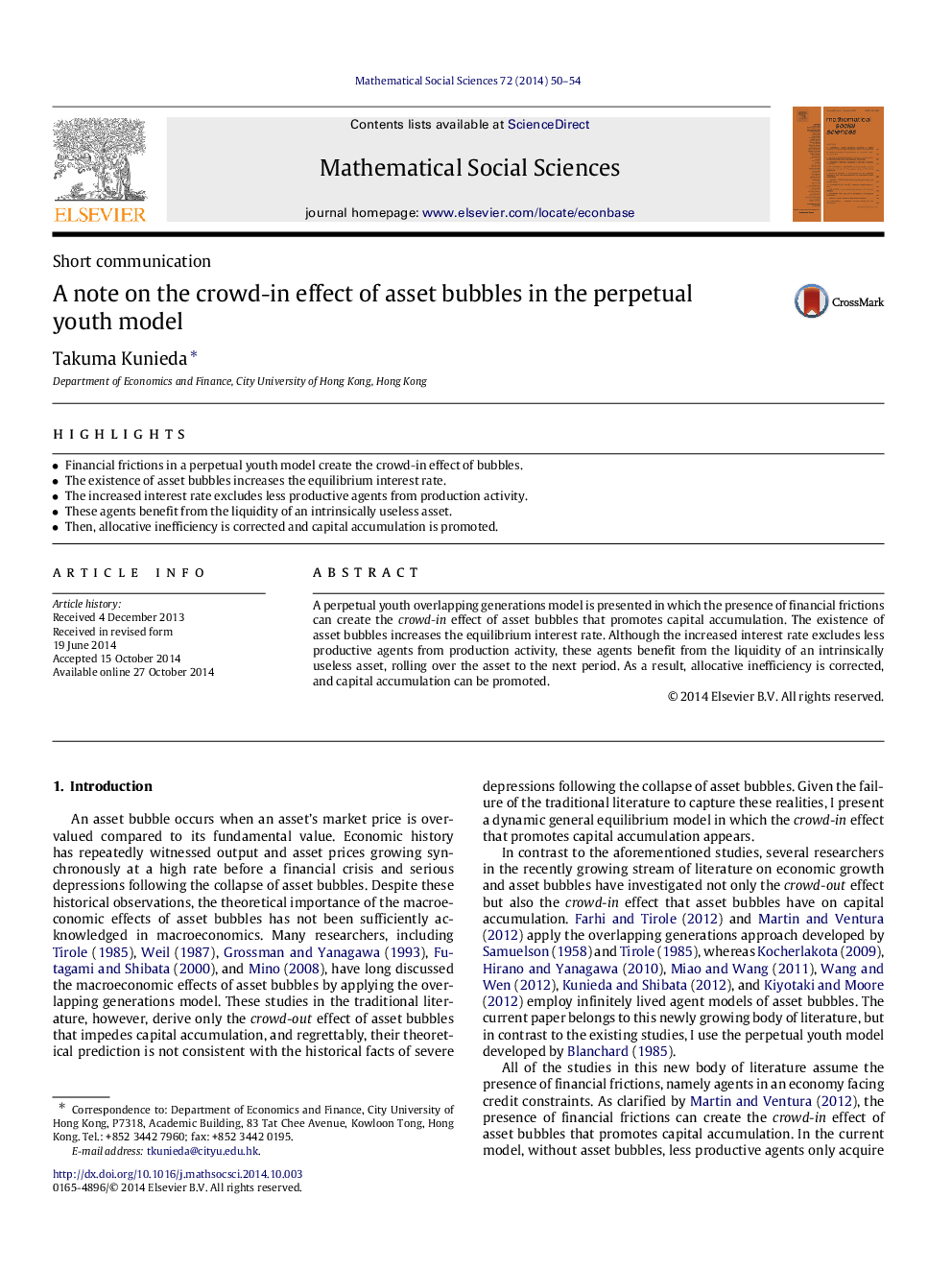| Article ID | Journal | Published Year | Pages | File Type |
|---|---|---|---|---|
| 972564 | Mathematical Social Sciences | 2014 | 5 Pages |
•Financial frictions in a perpetual youth model create the crowd-in effect of bubbles.•The existence of asset bubbles increases the equilibrium interest rate.•The increased interest rate excludes less productive agents from production activity.•These agents benefit from the liquidity of an intrinsically useless asset.•Then, allocative inefficiency is corrected and capital accumulation is promoted.
A perpetual youth overlapping generations model is presented in which the presence of financial frictions can create the crowd-in effect of asset bubbles that promotes capital accumulation. The existence of asset bubbles increases the equilibrium interest rate. Although the increased interest rate excludes less productive agents from production activity, these agents benefit from the liquidity of an intrinsically useless asset, rolling over the asset to the next period. As a result, allocative inefficiency is corrected, and capital accumulation can be promoted.
